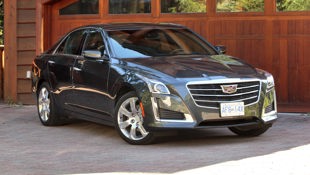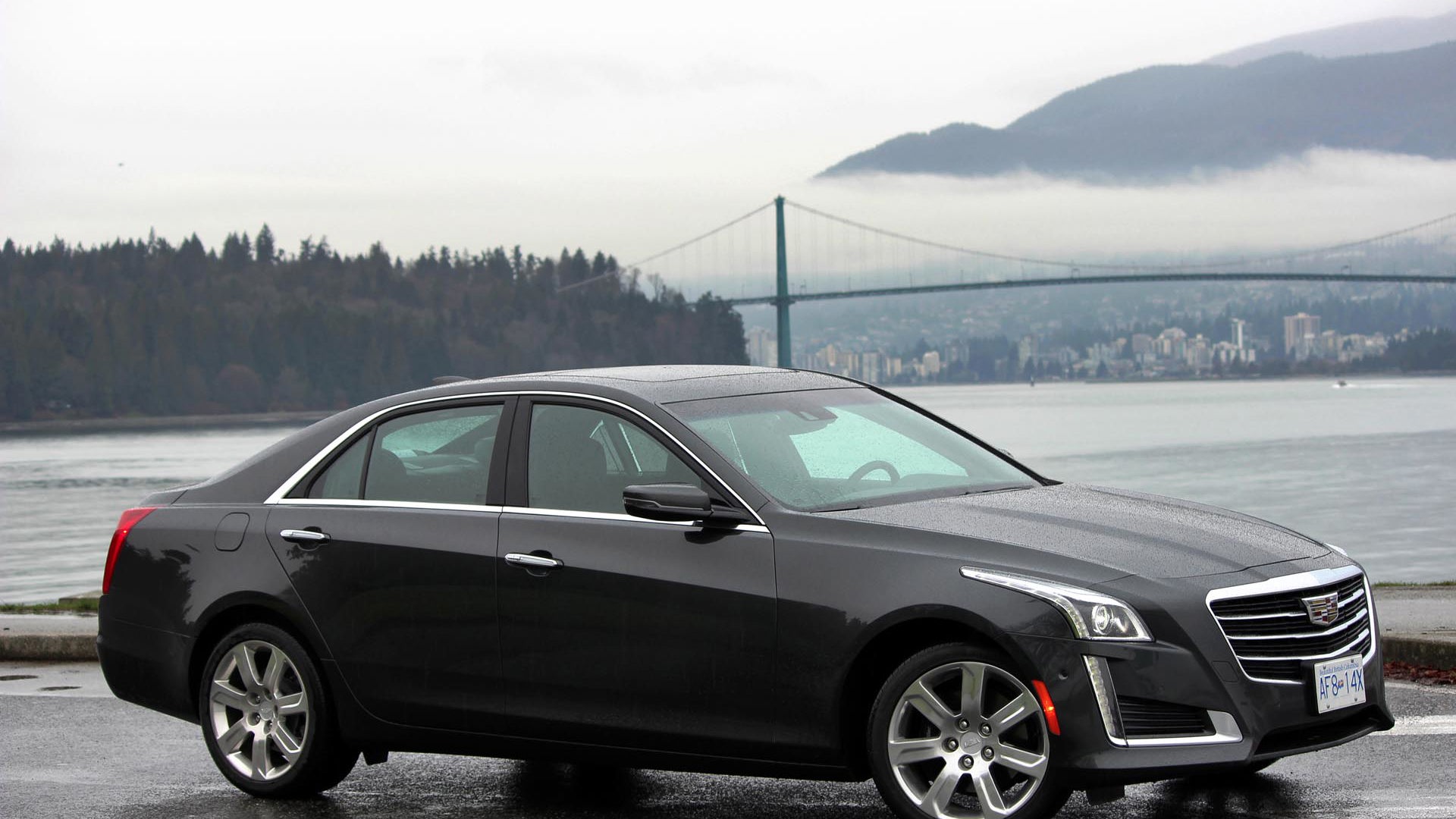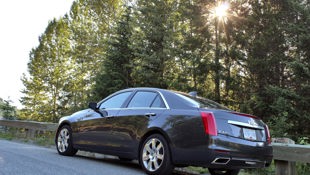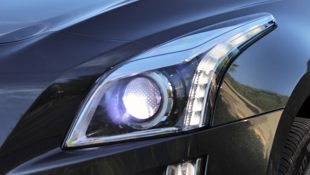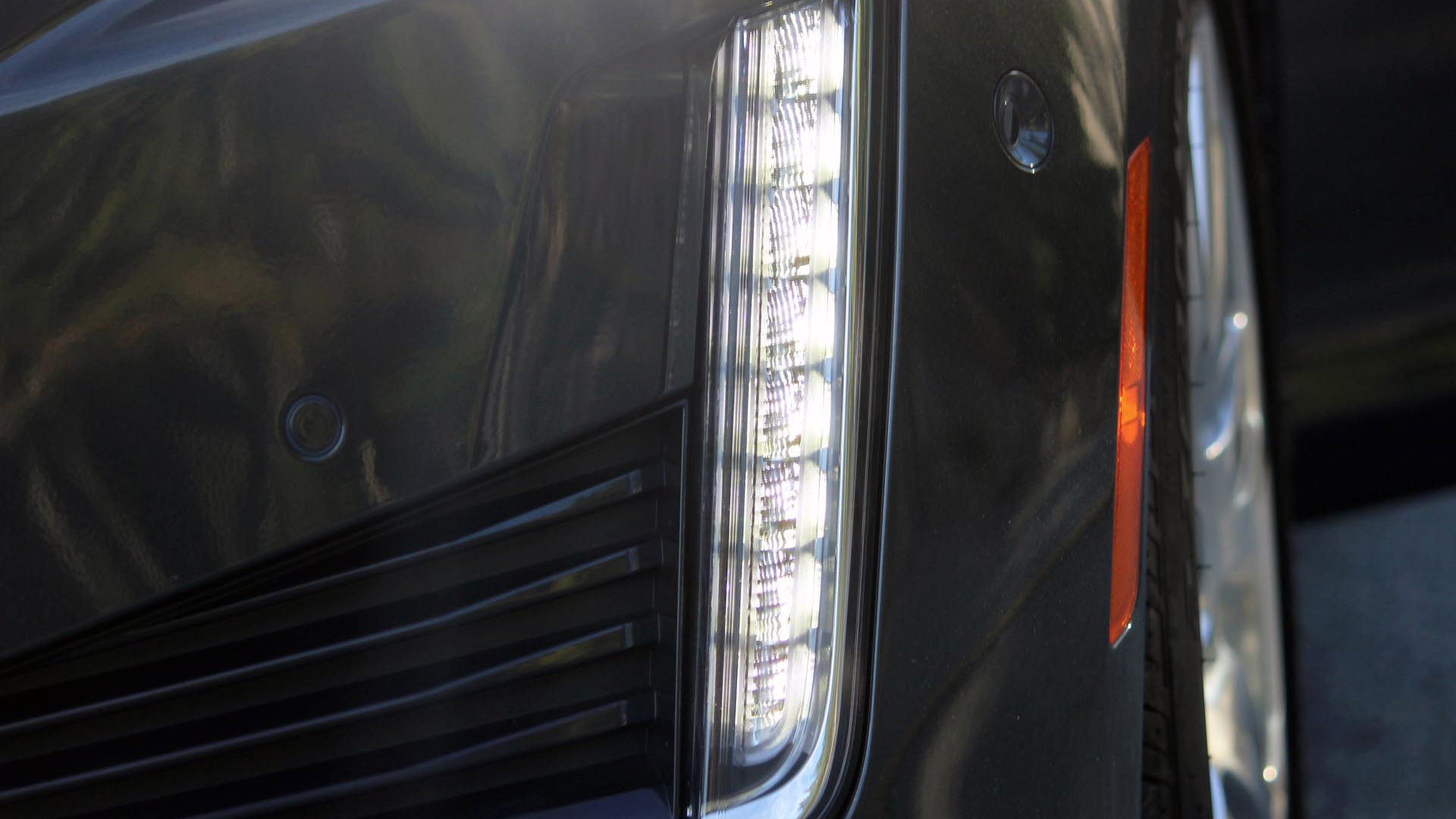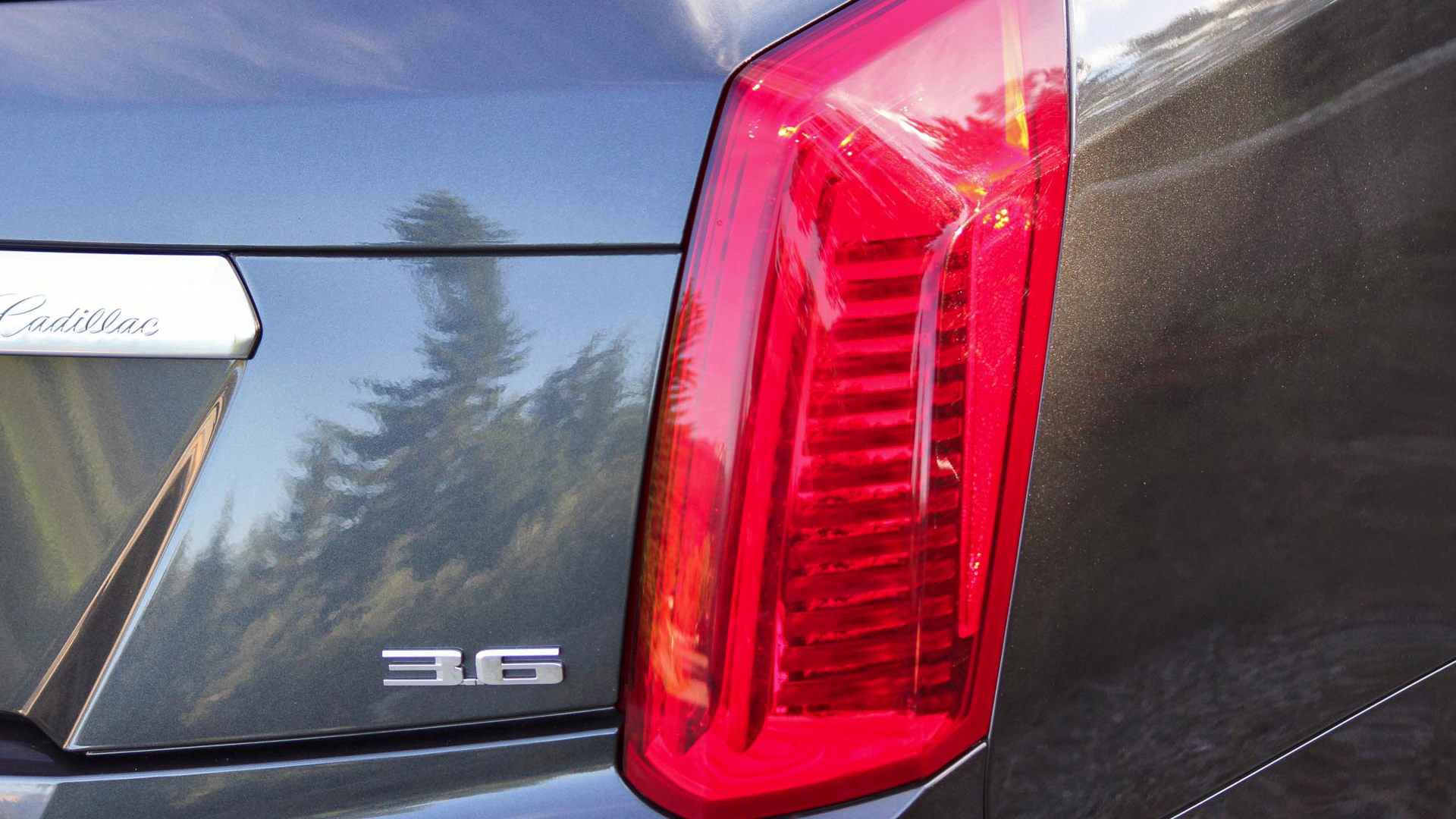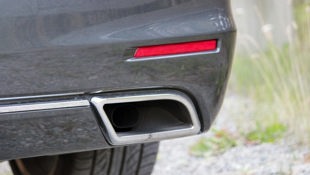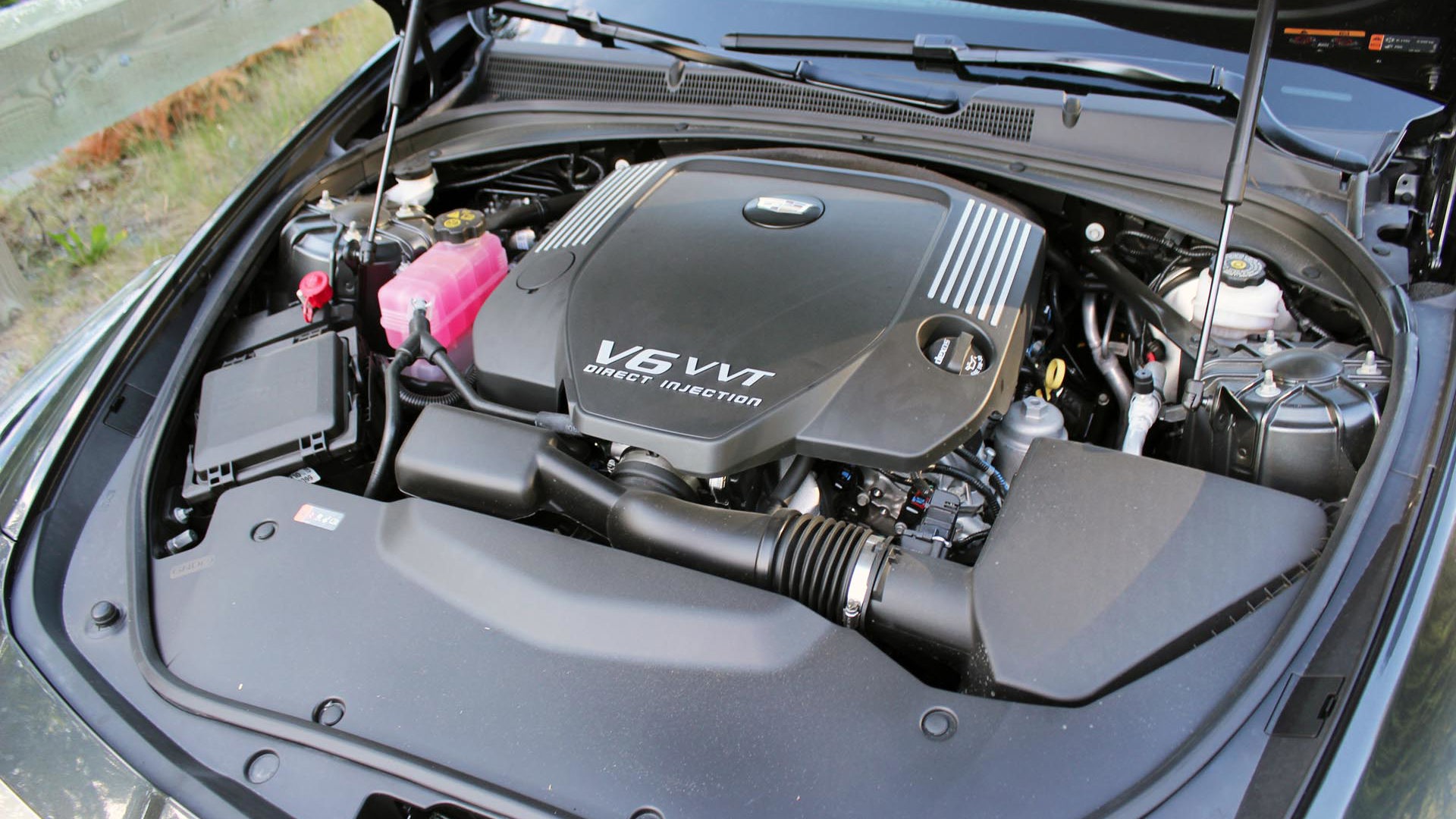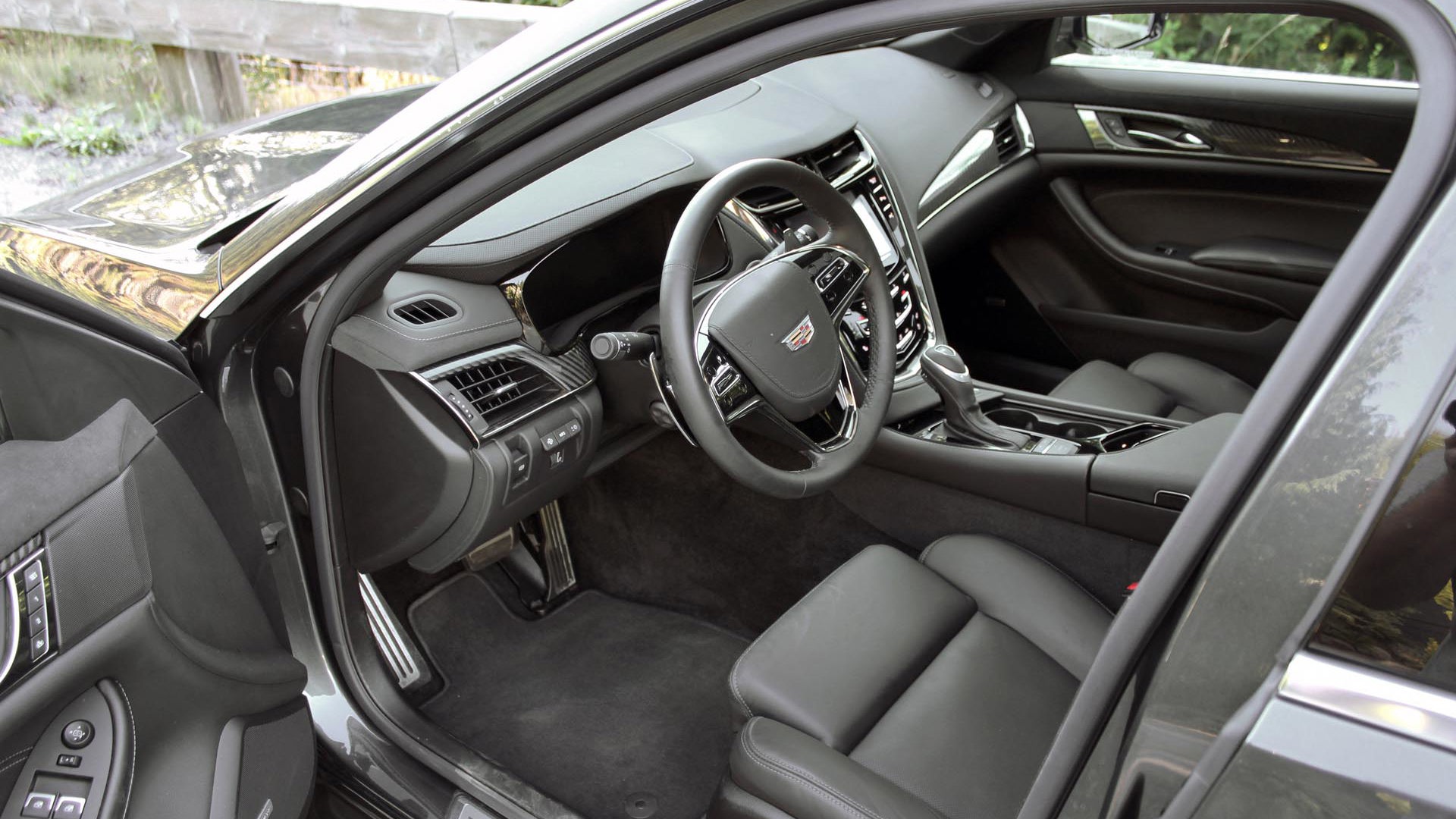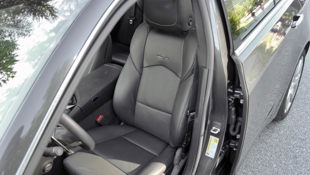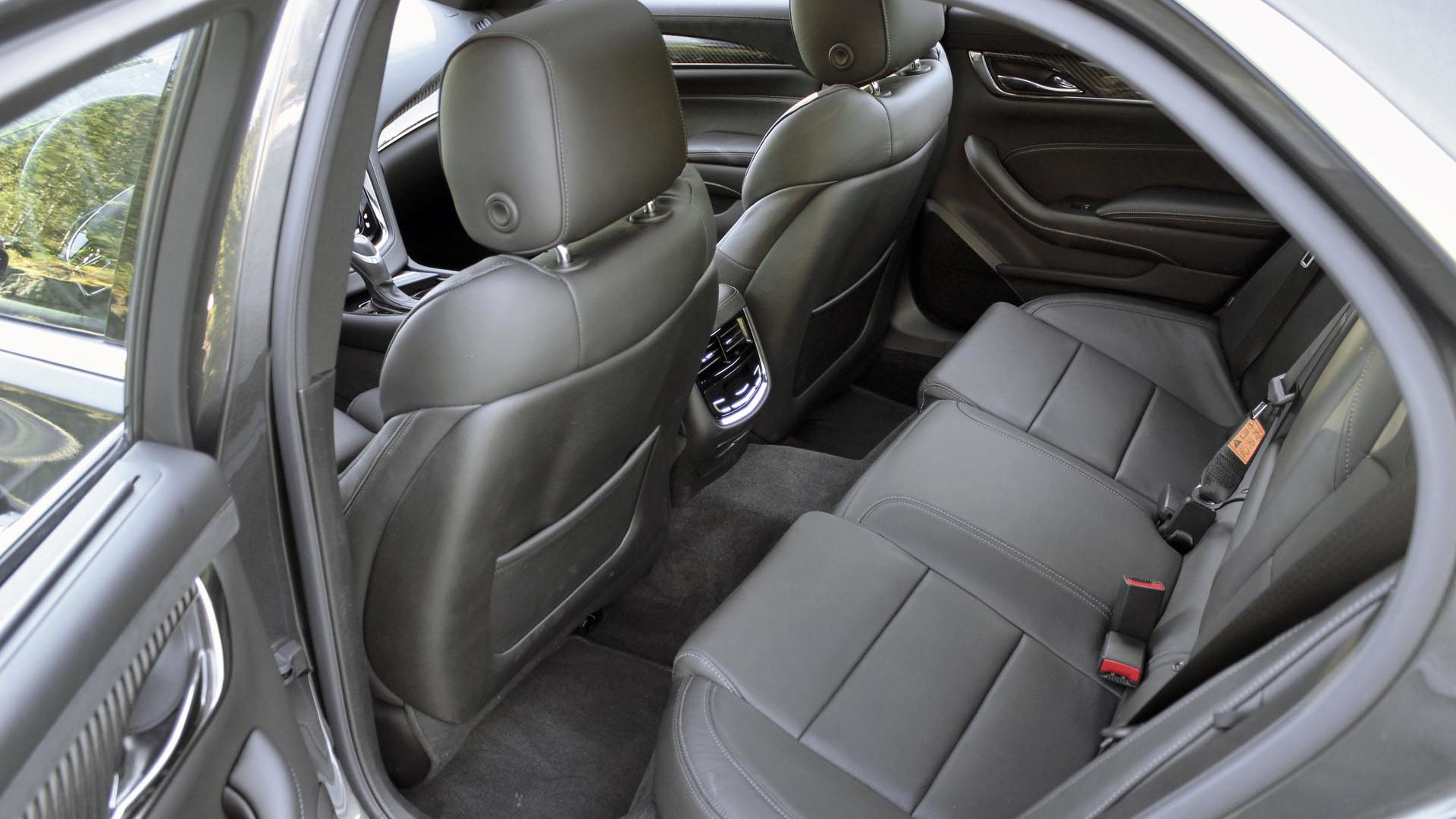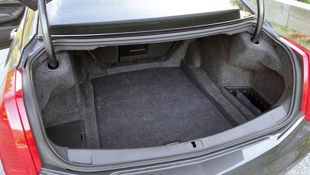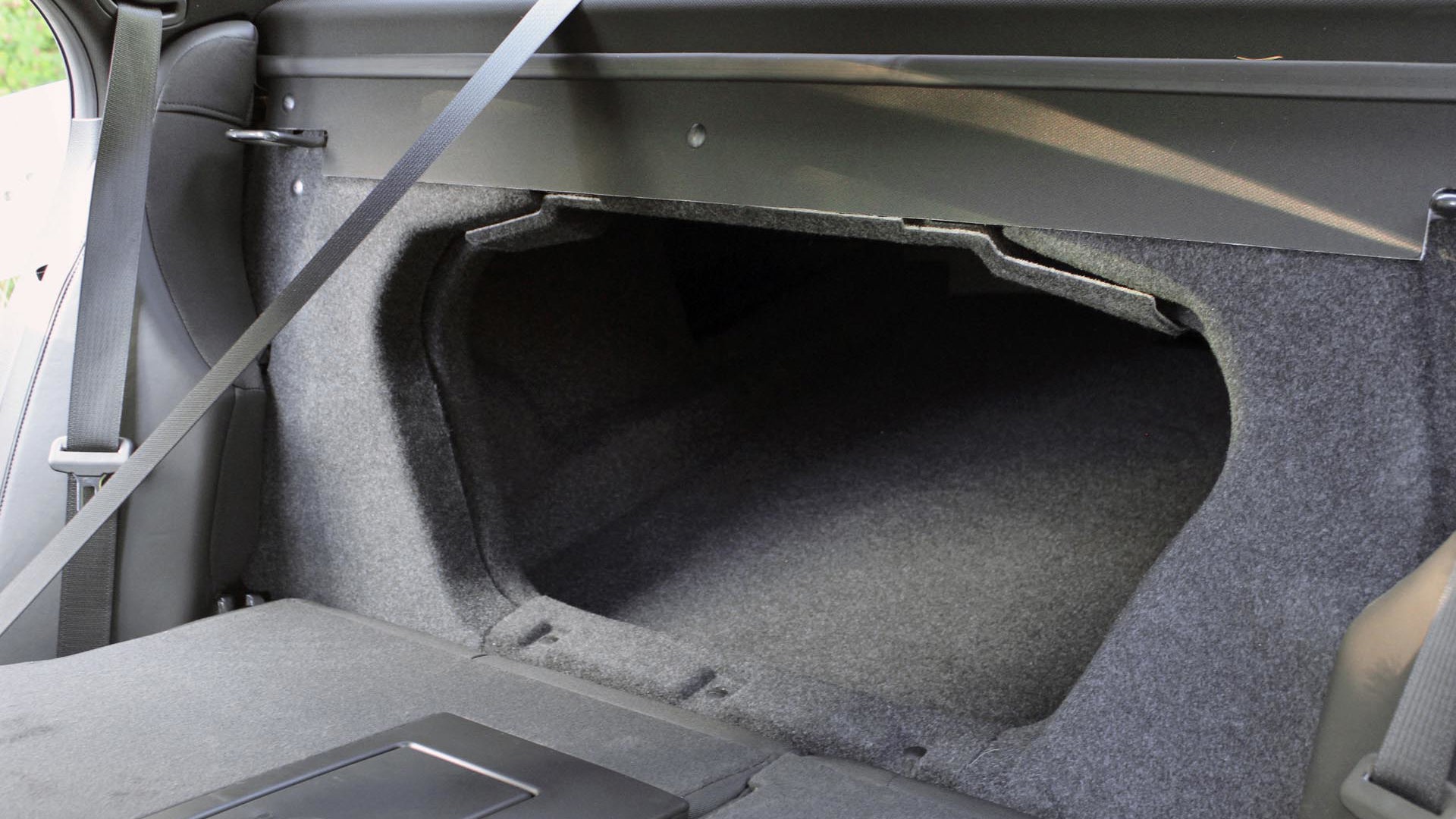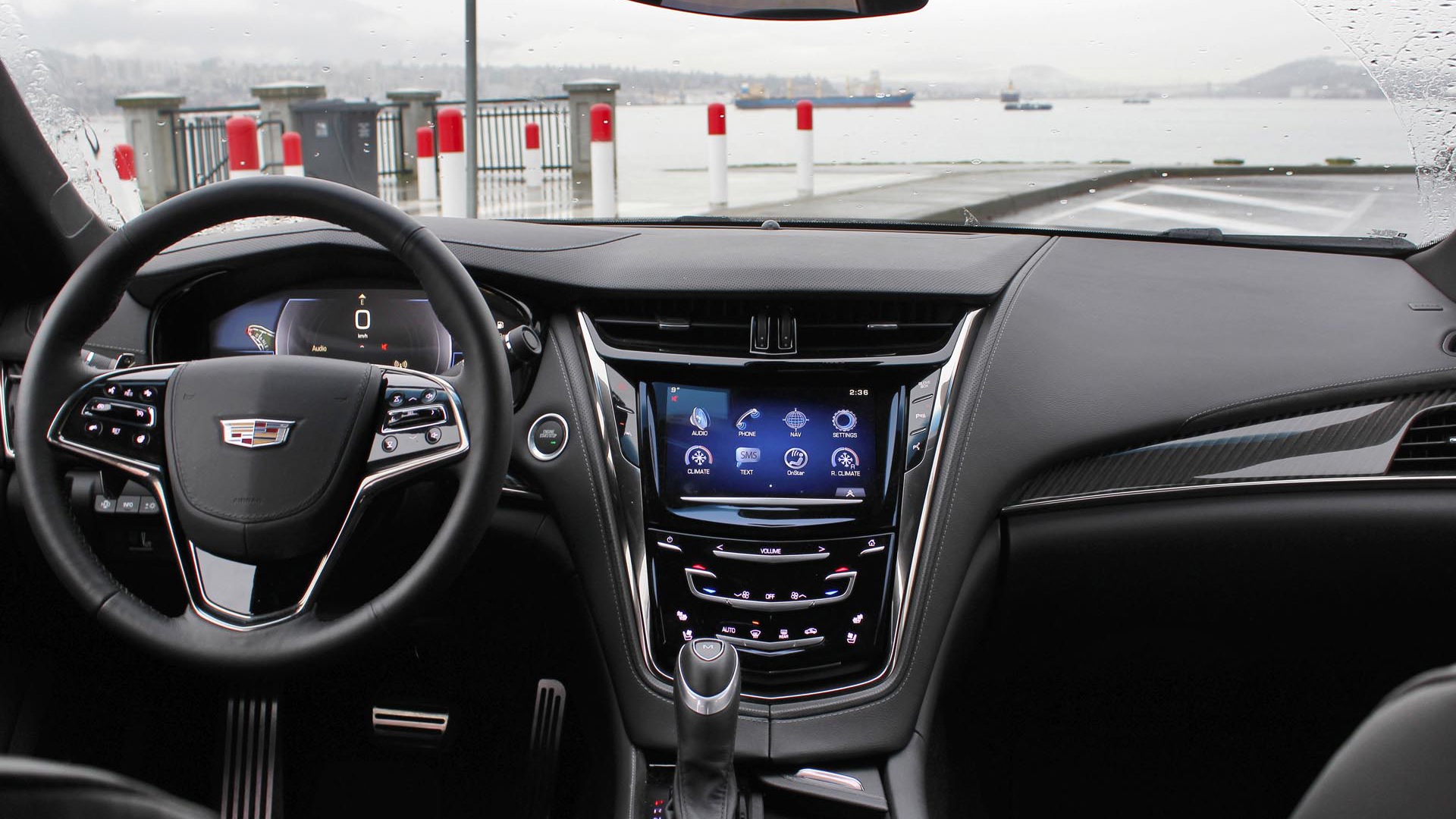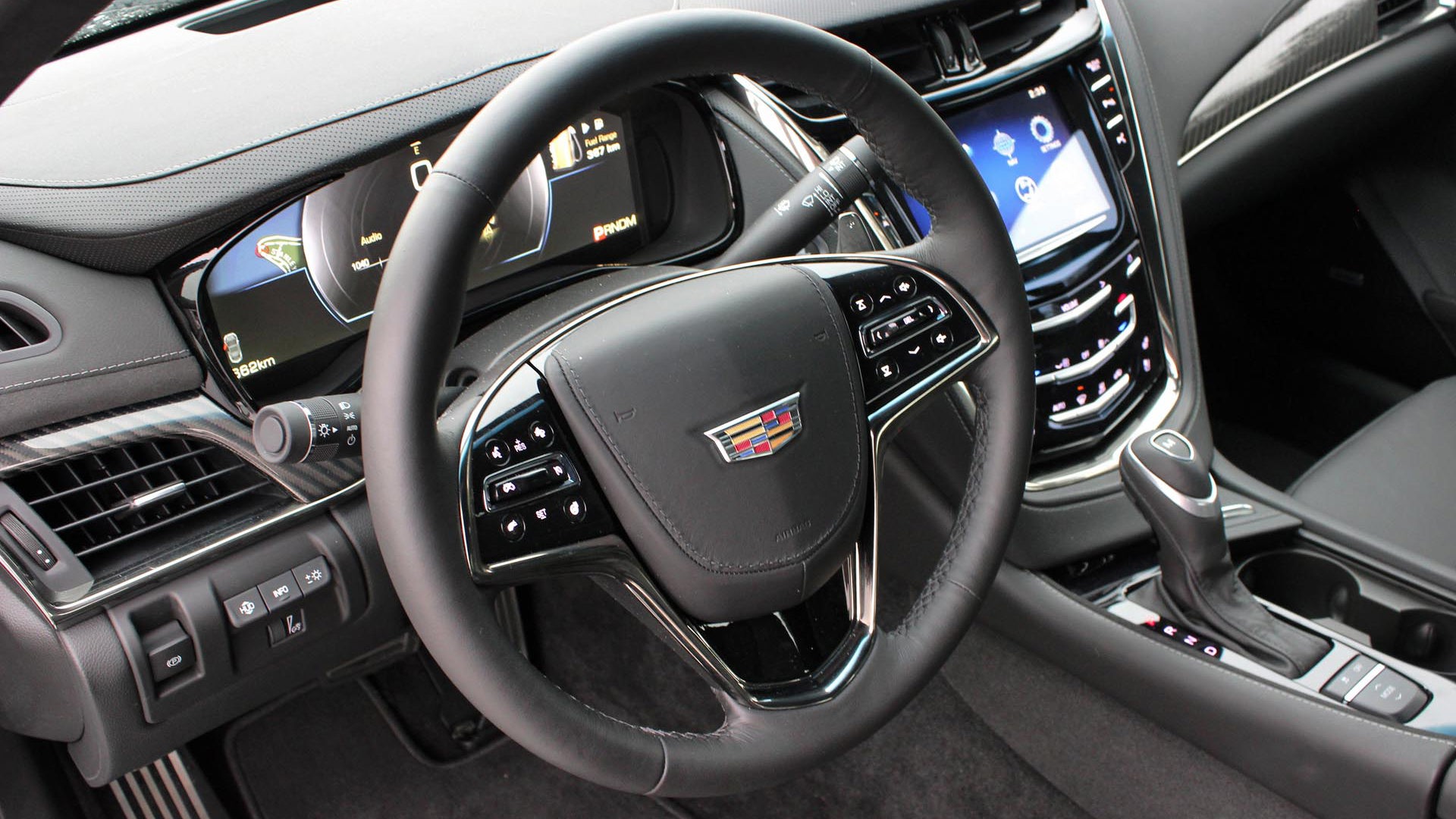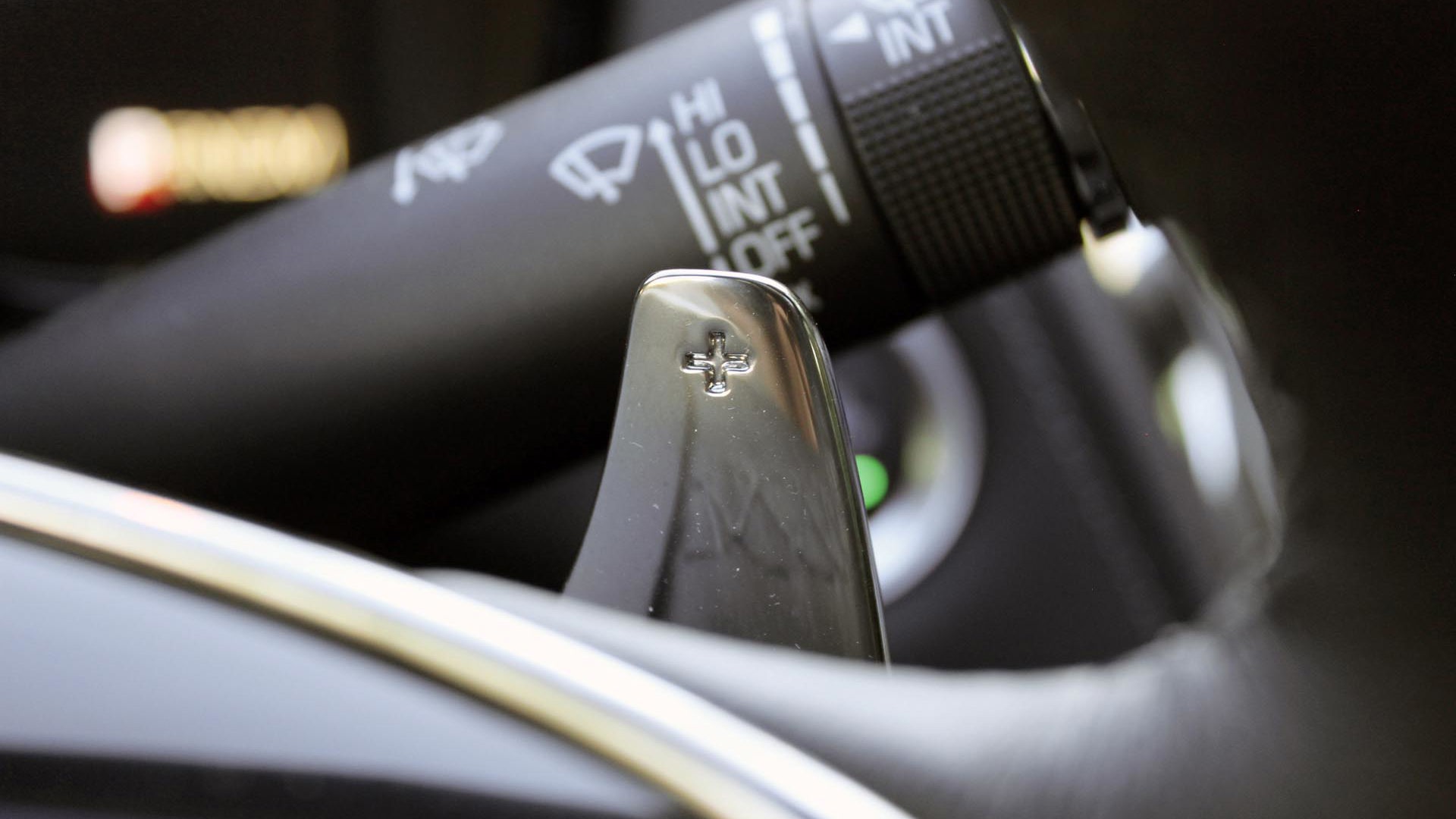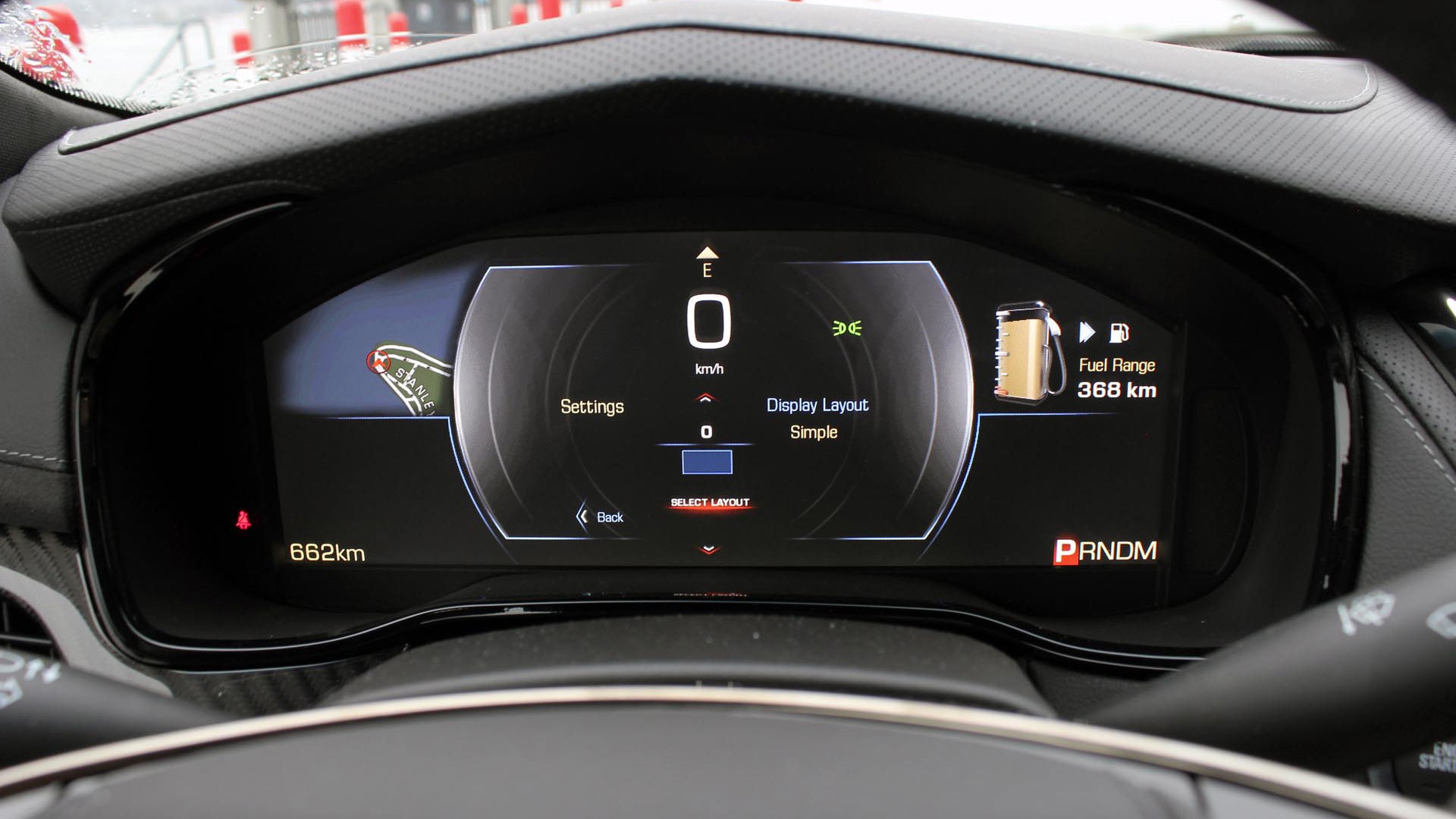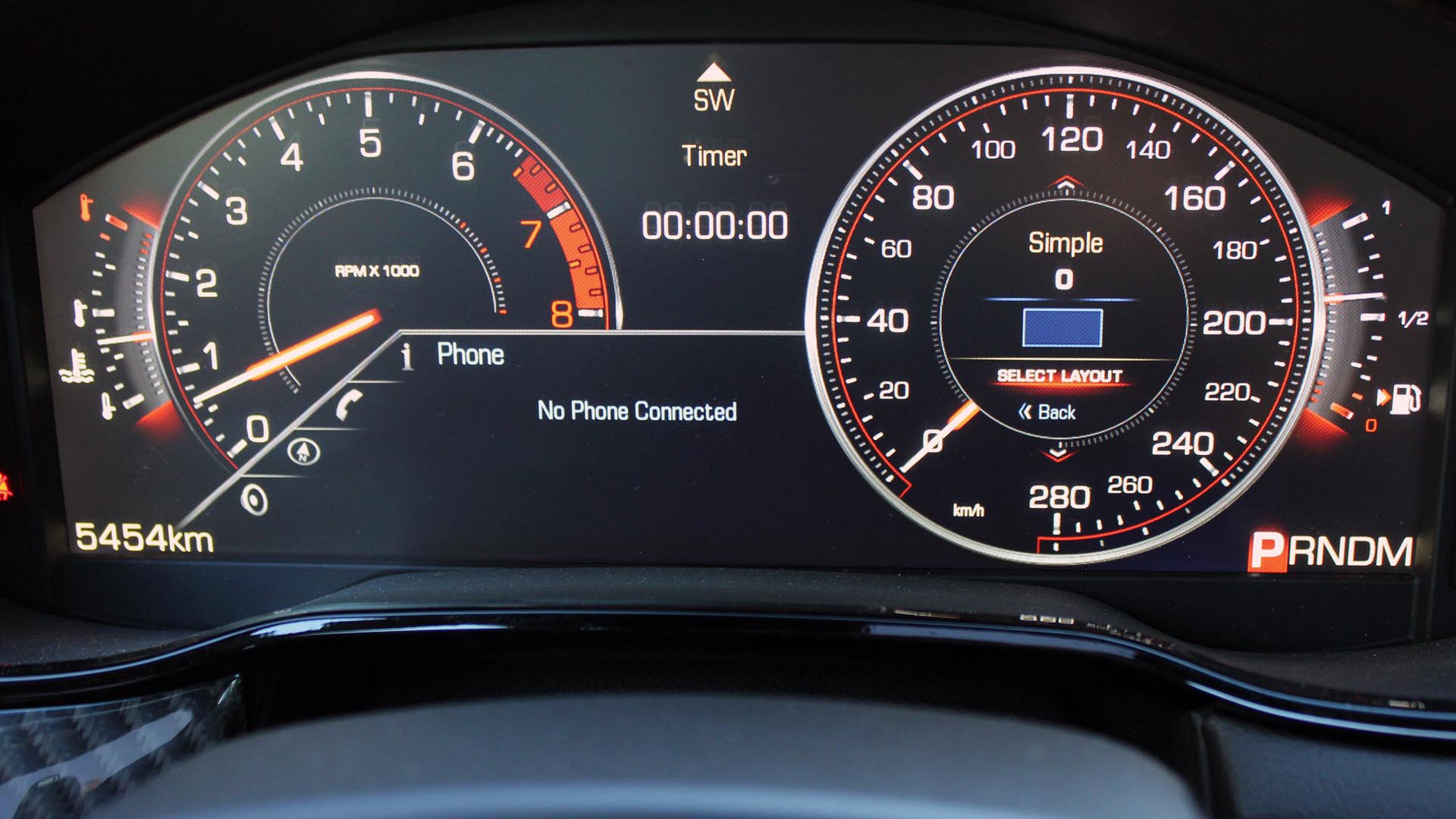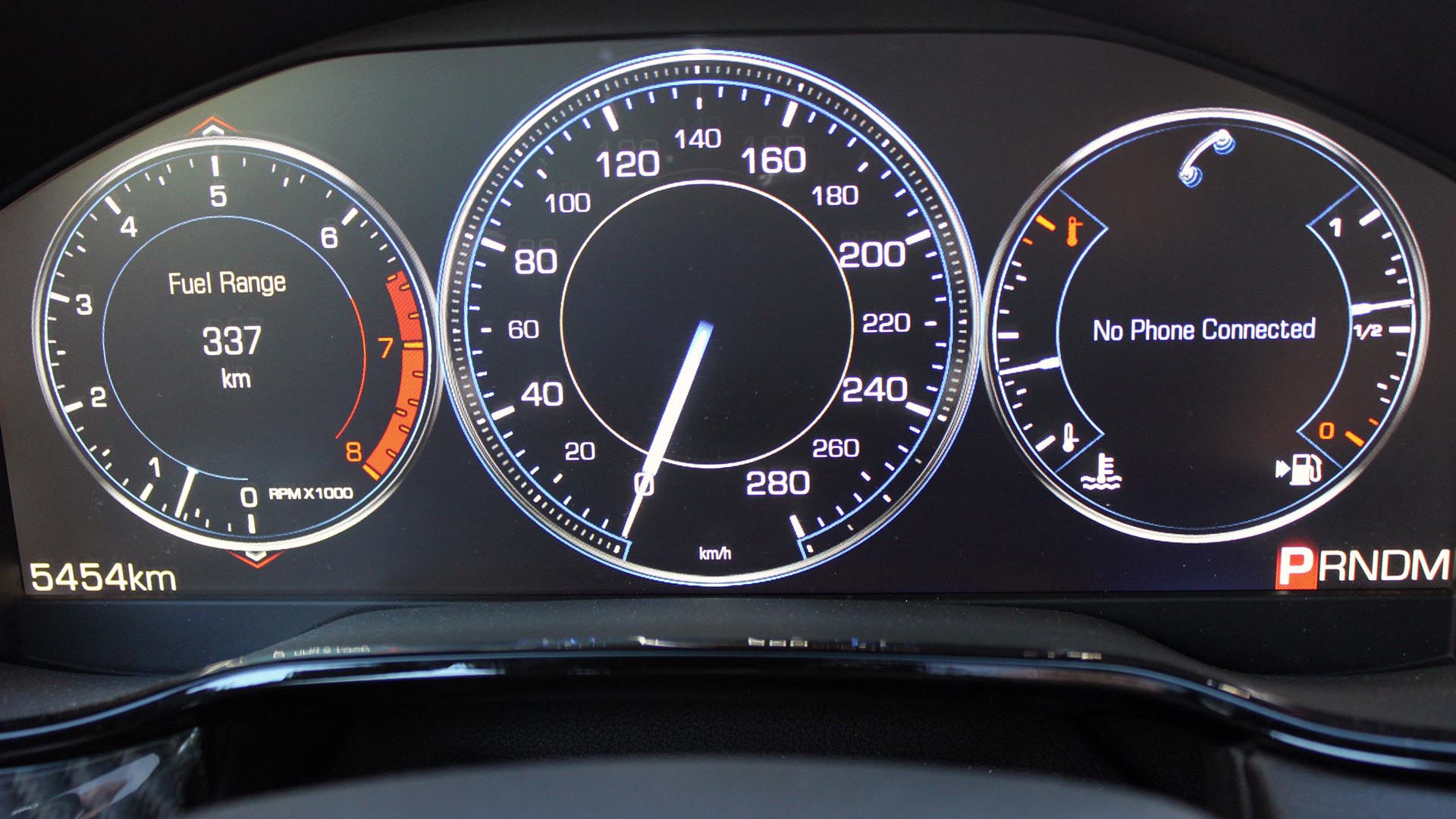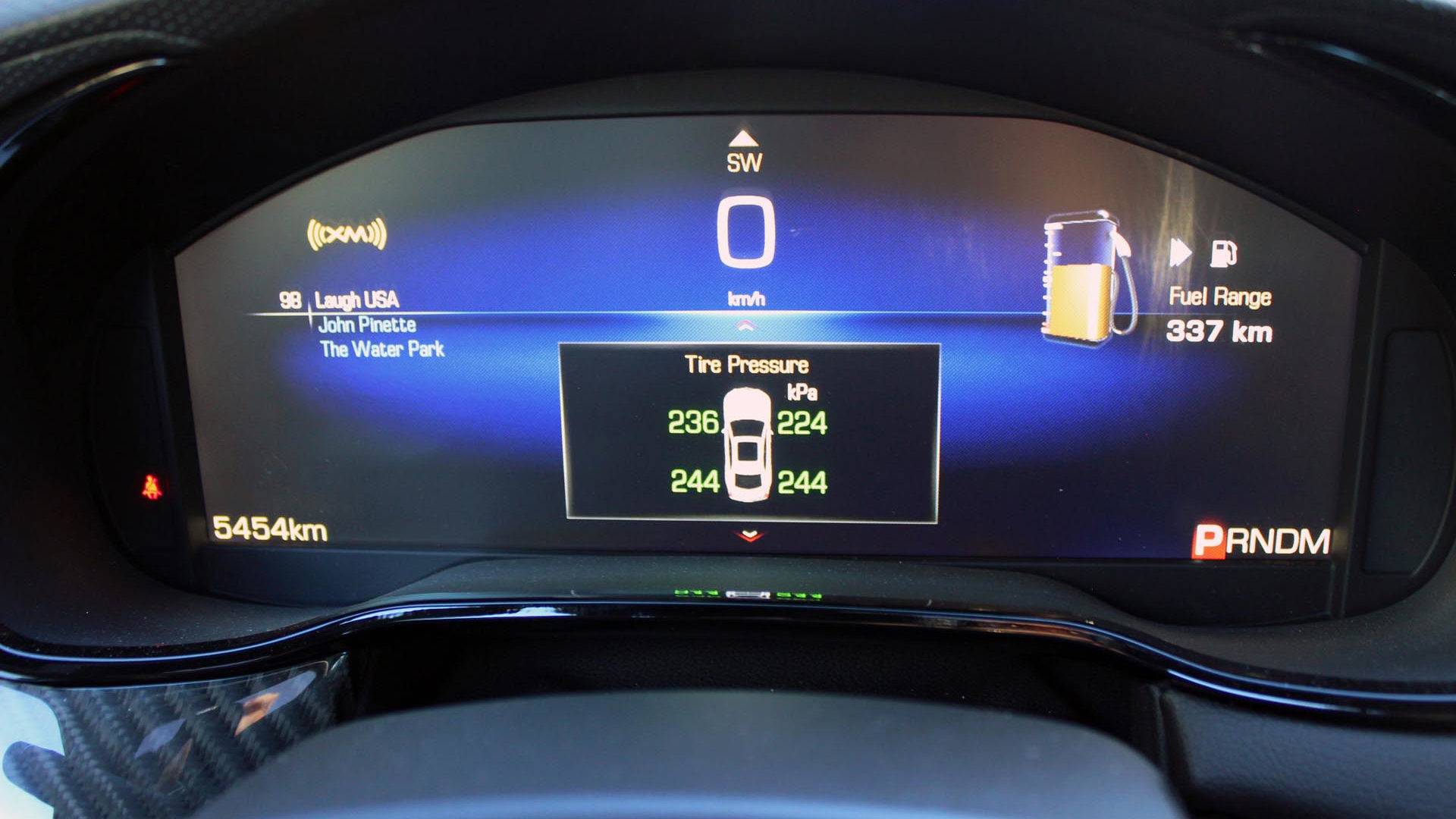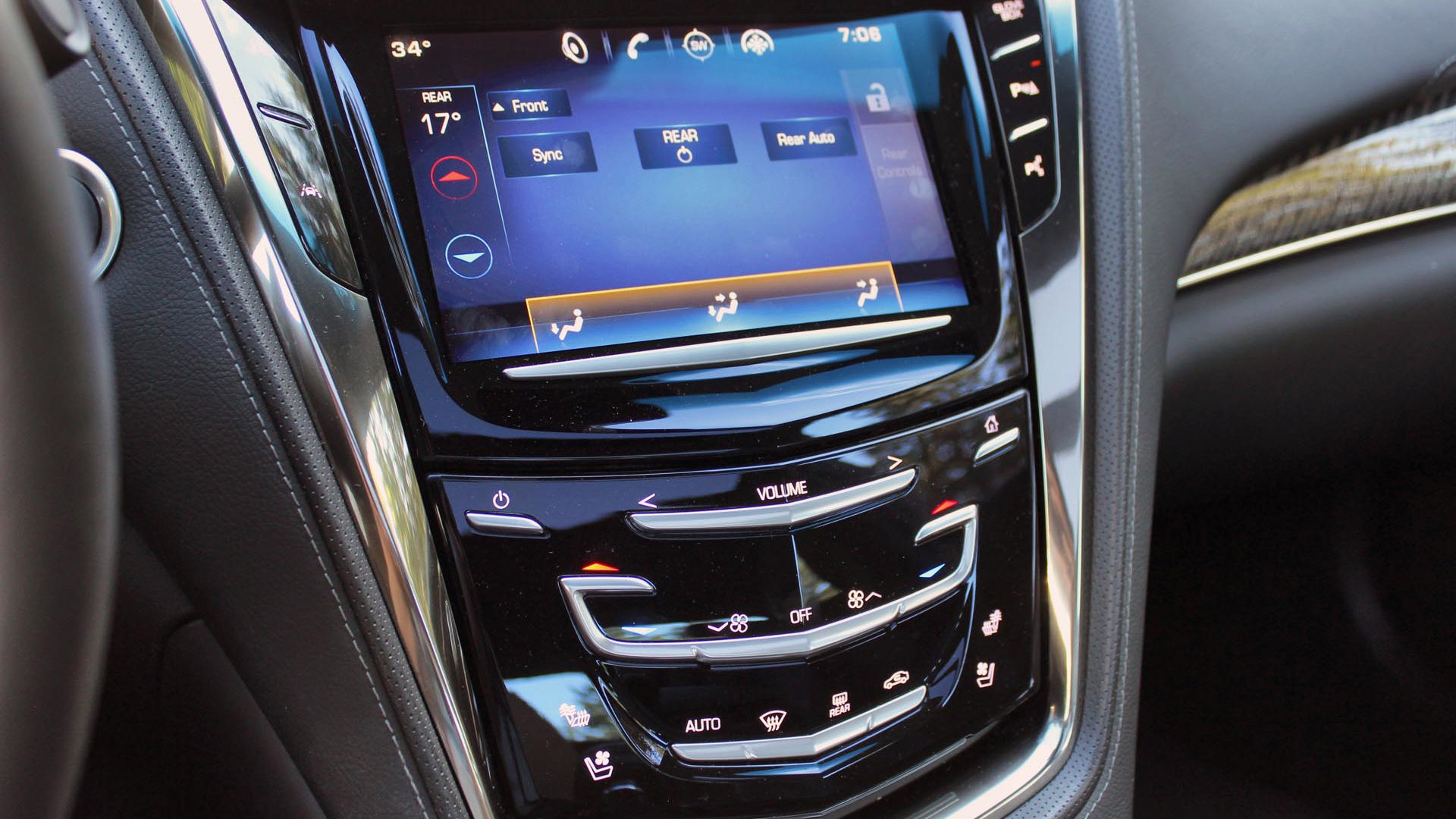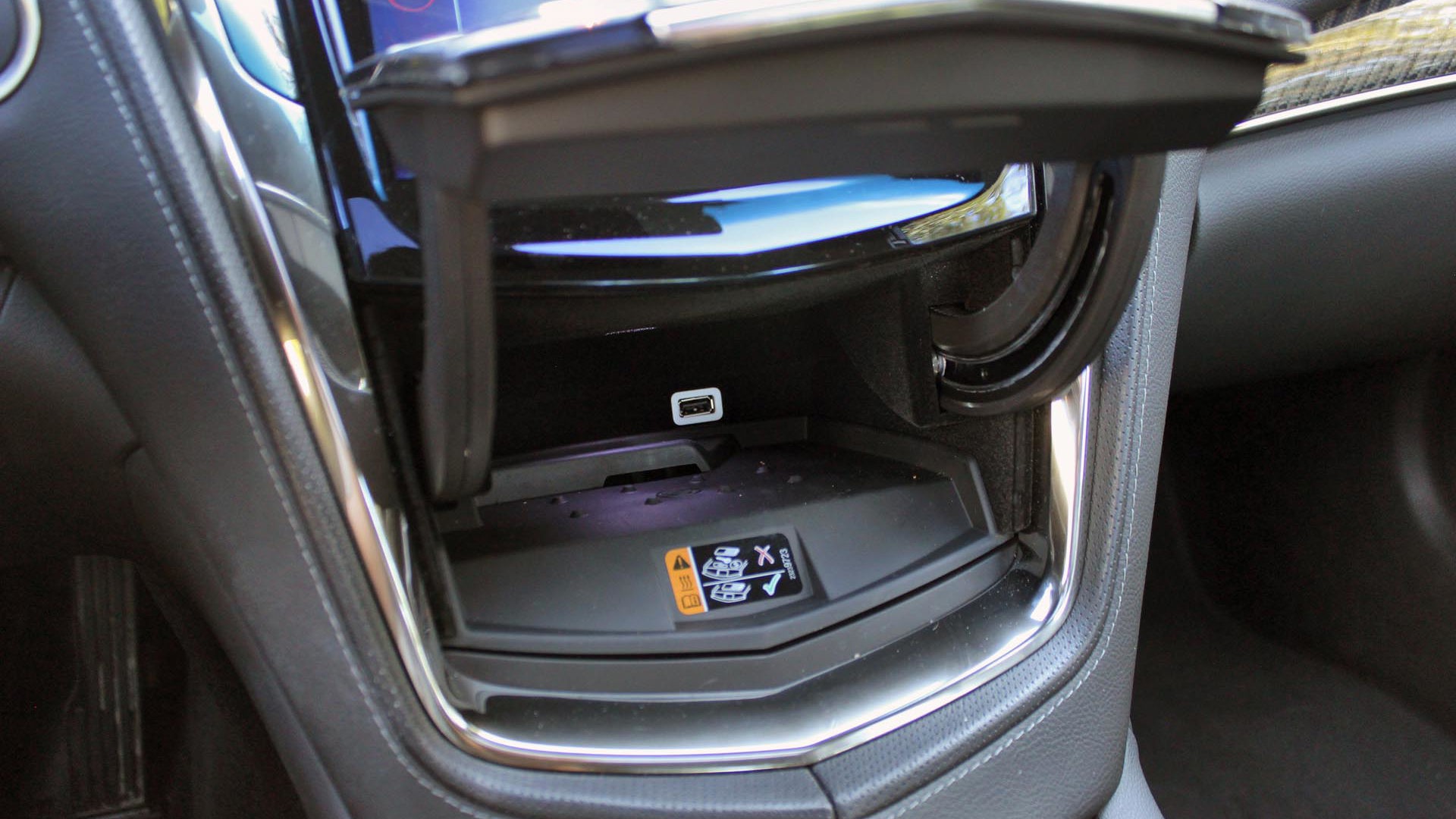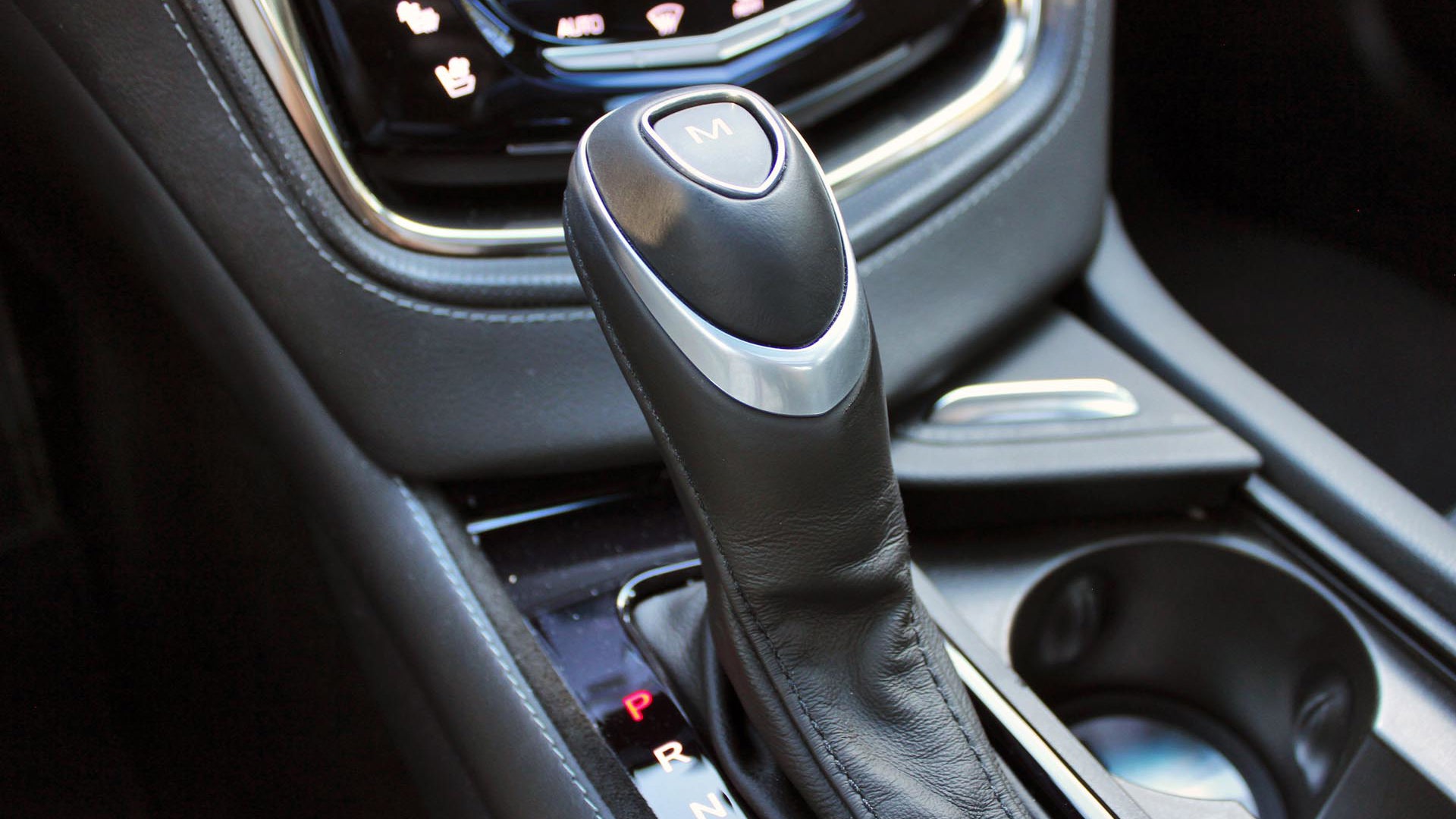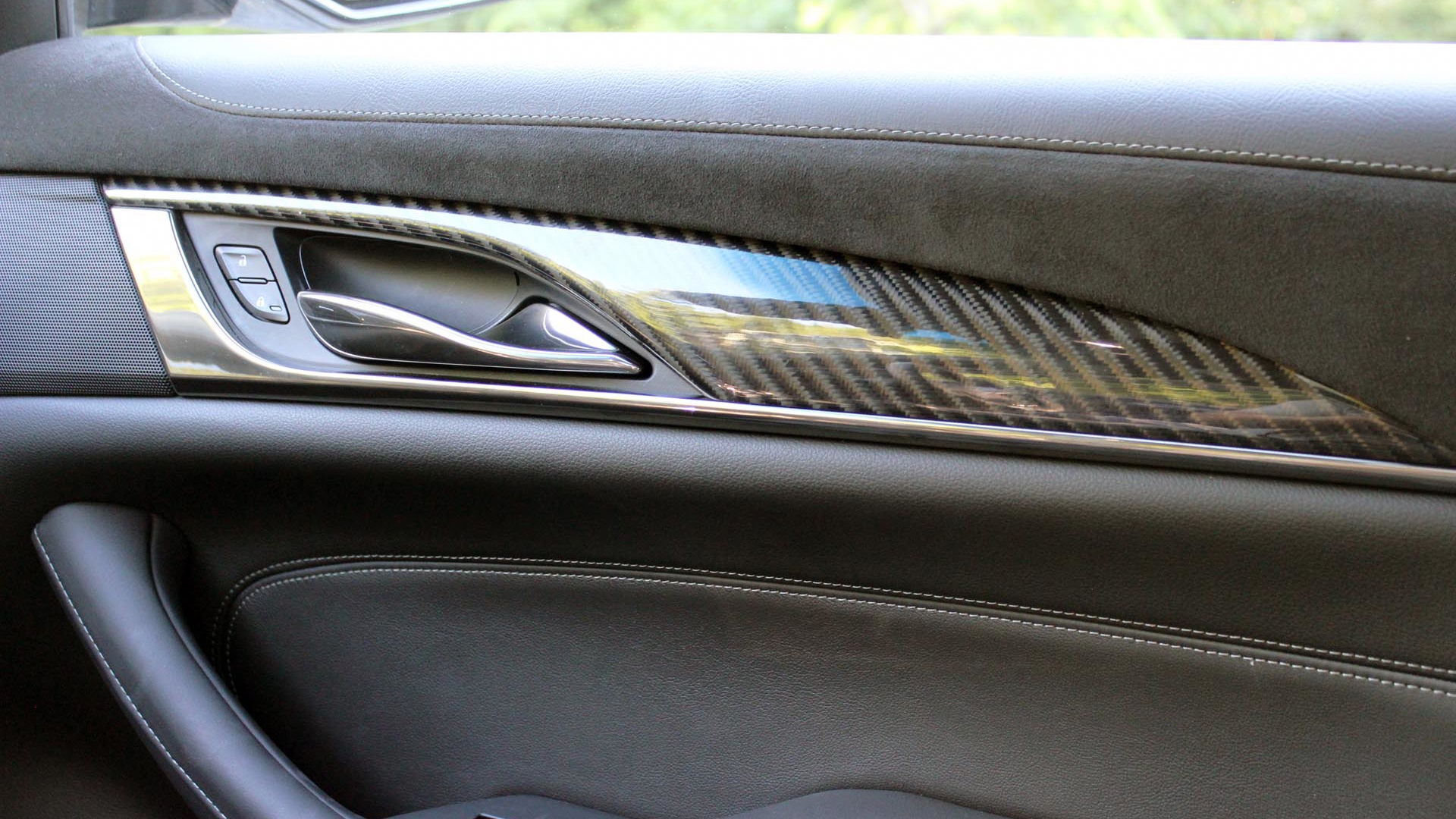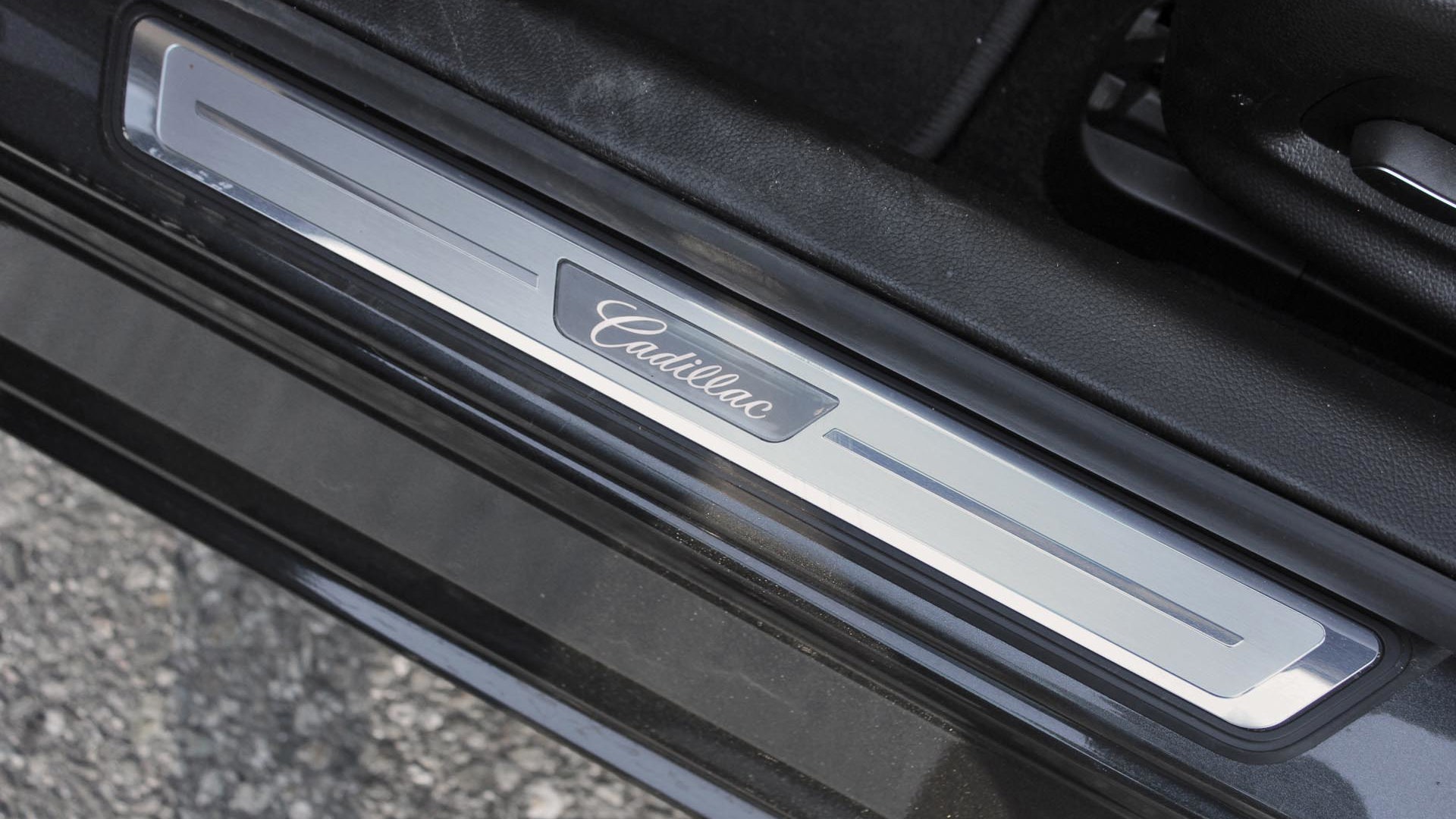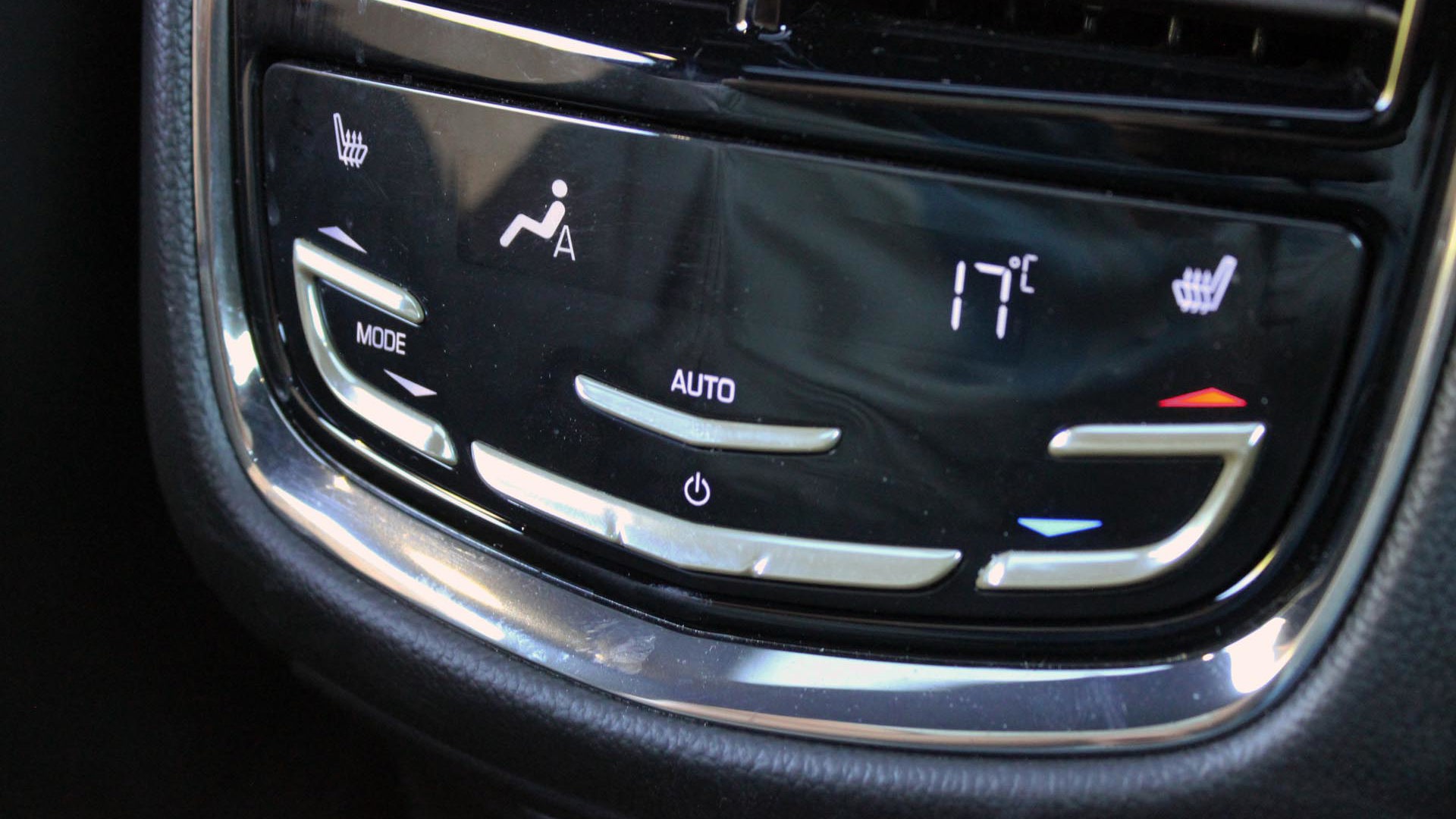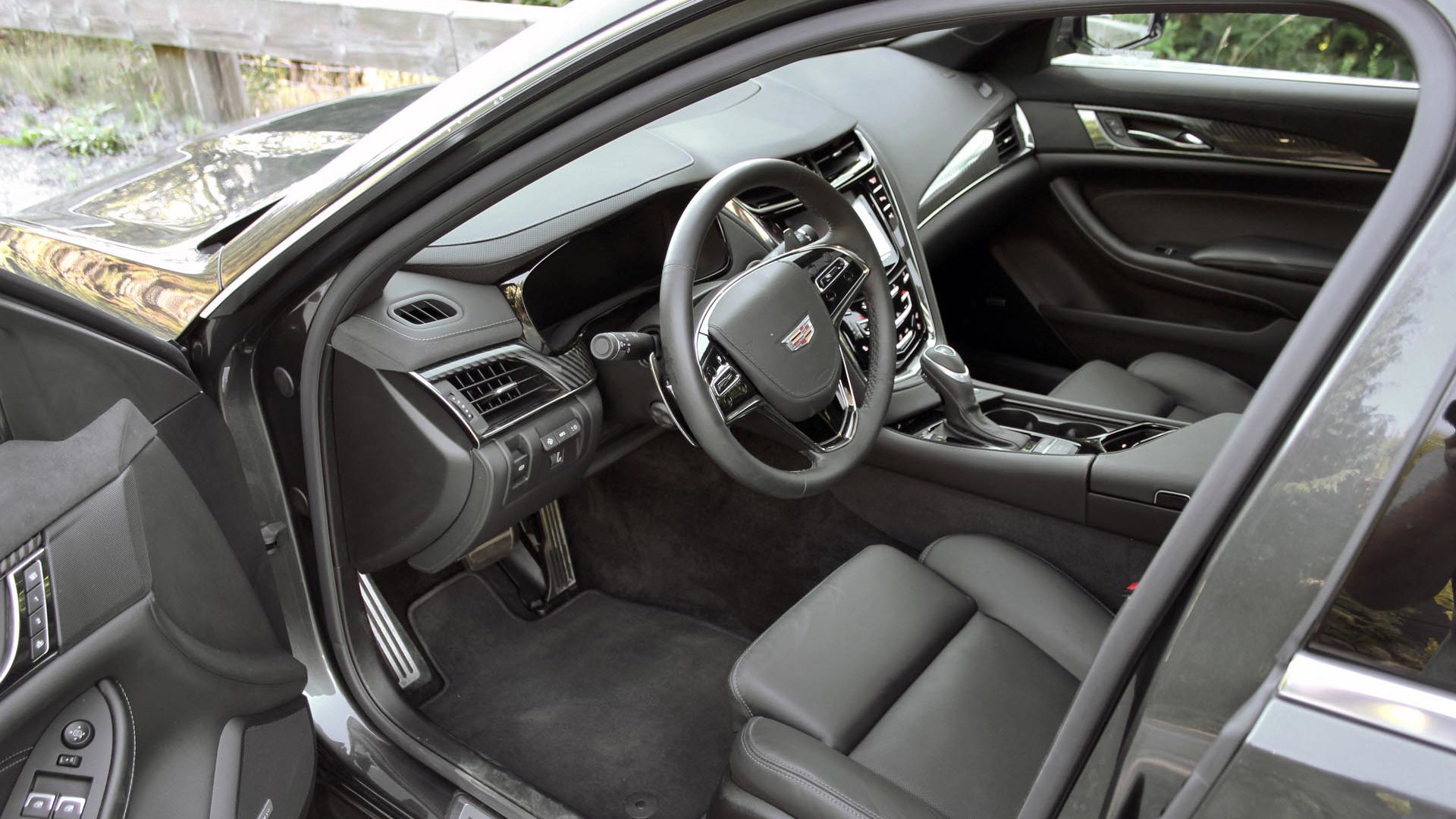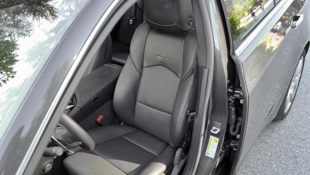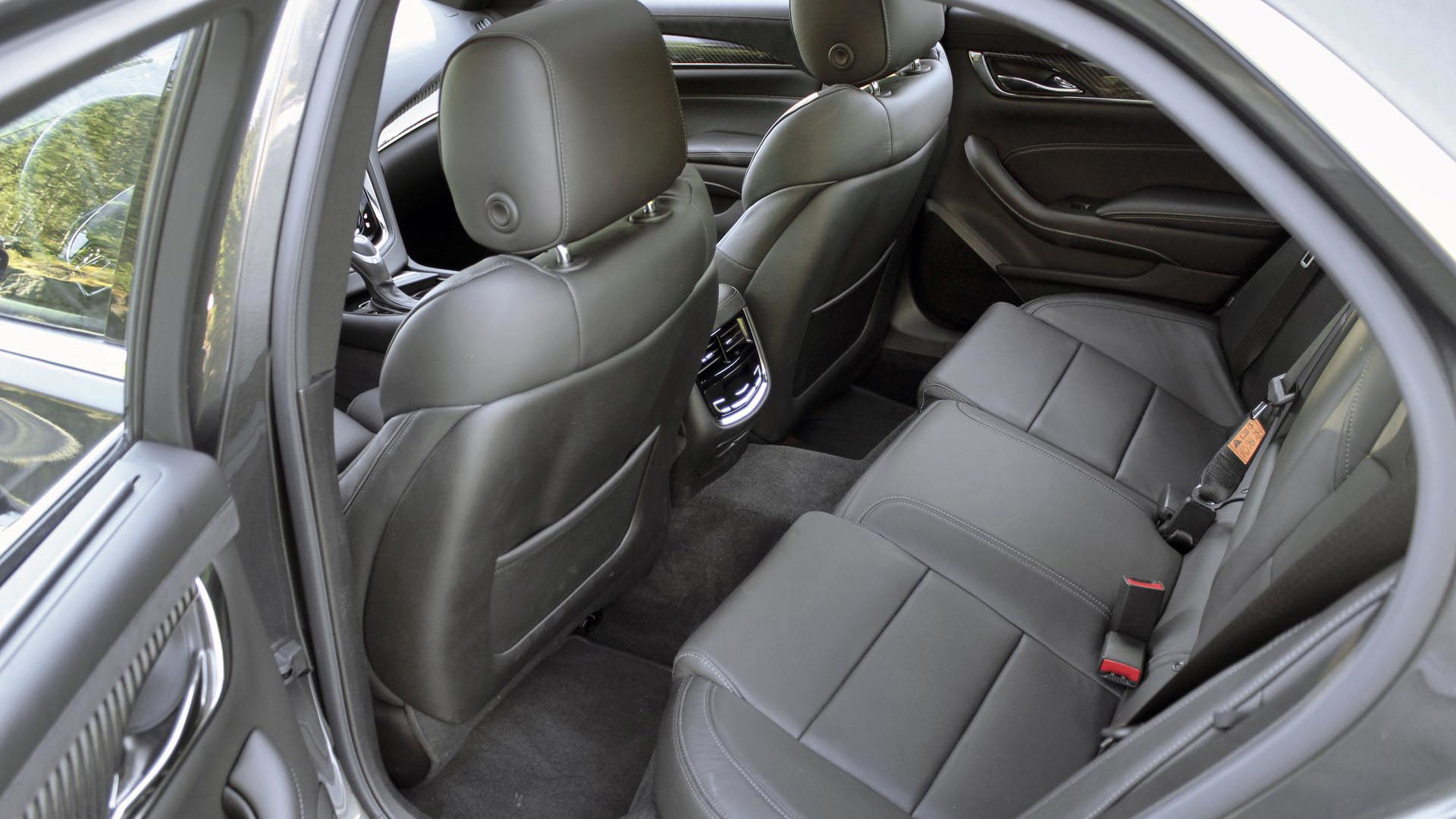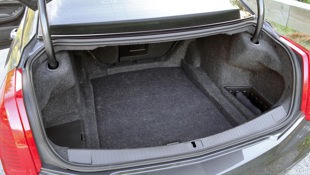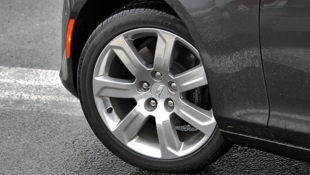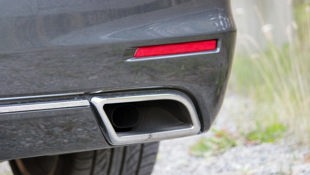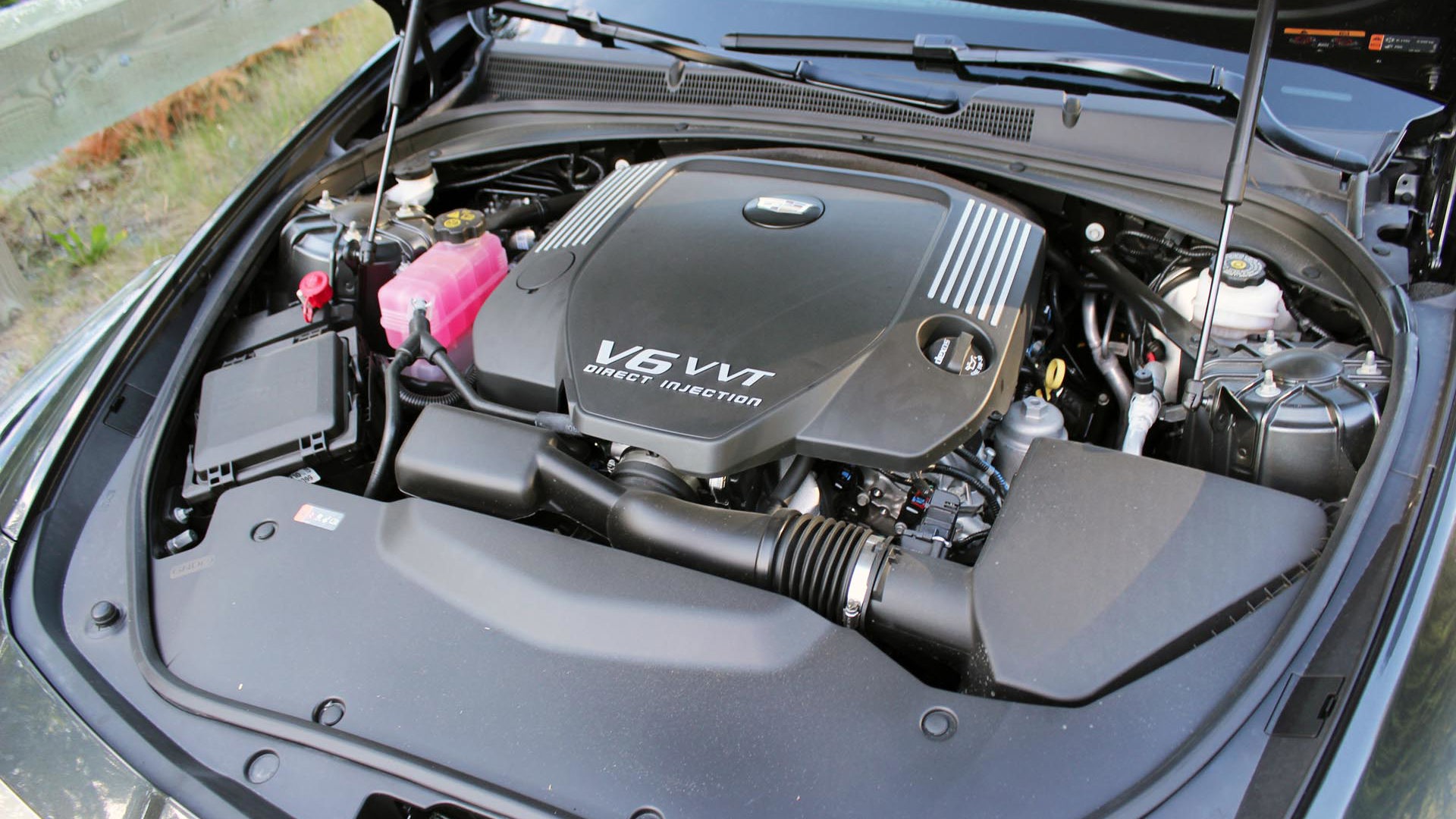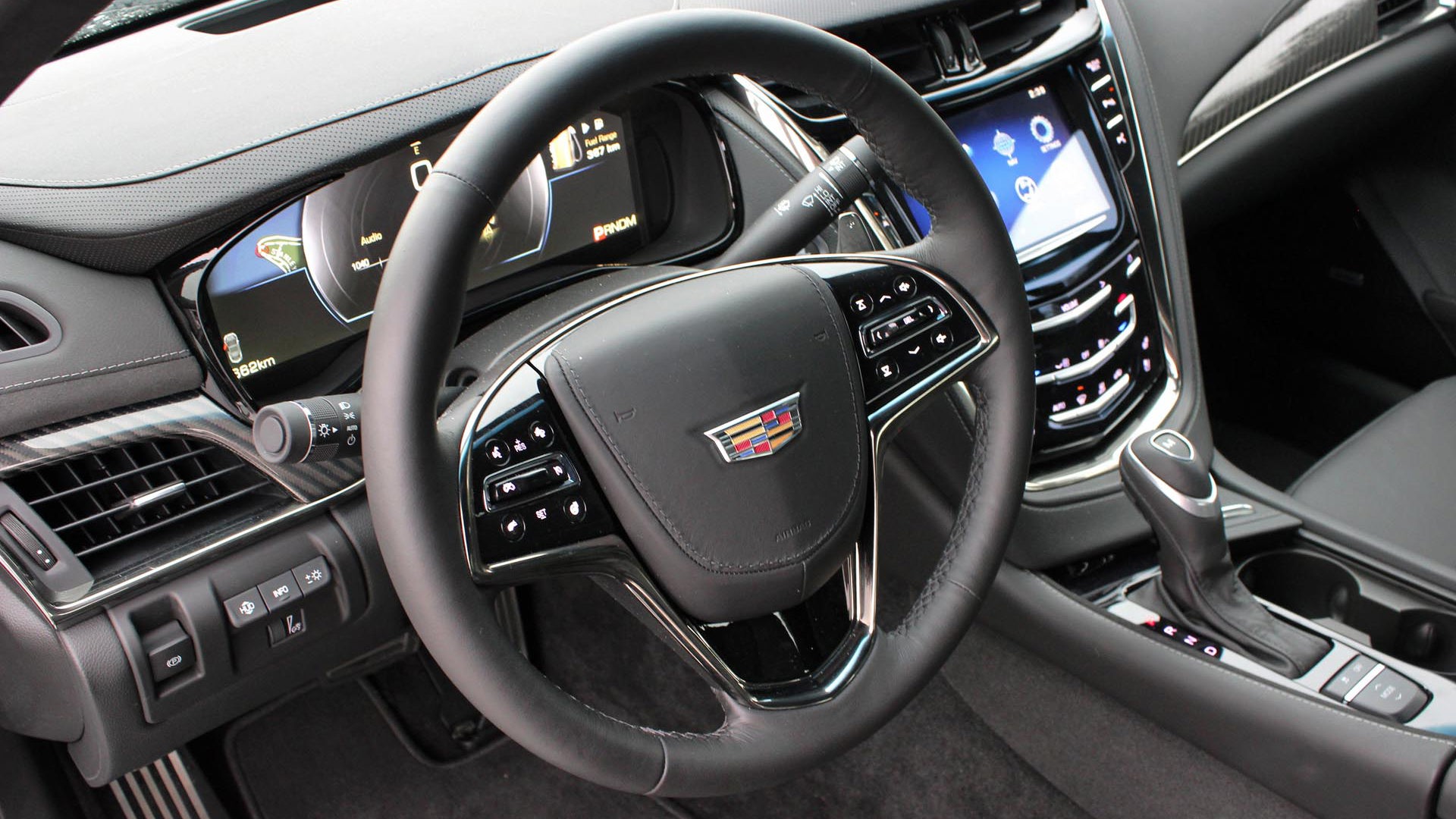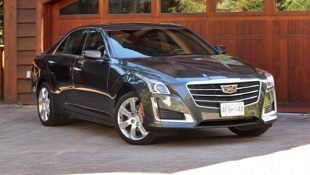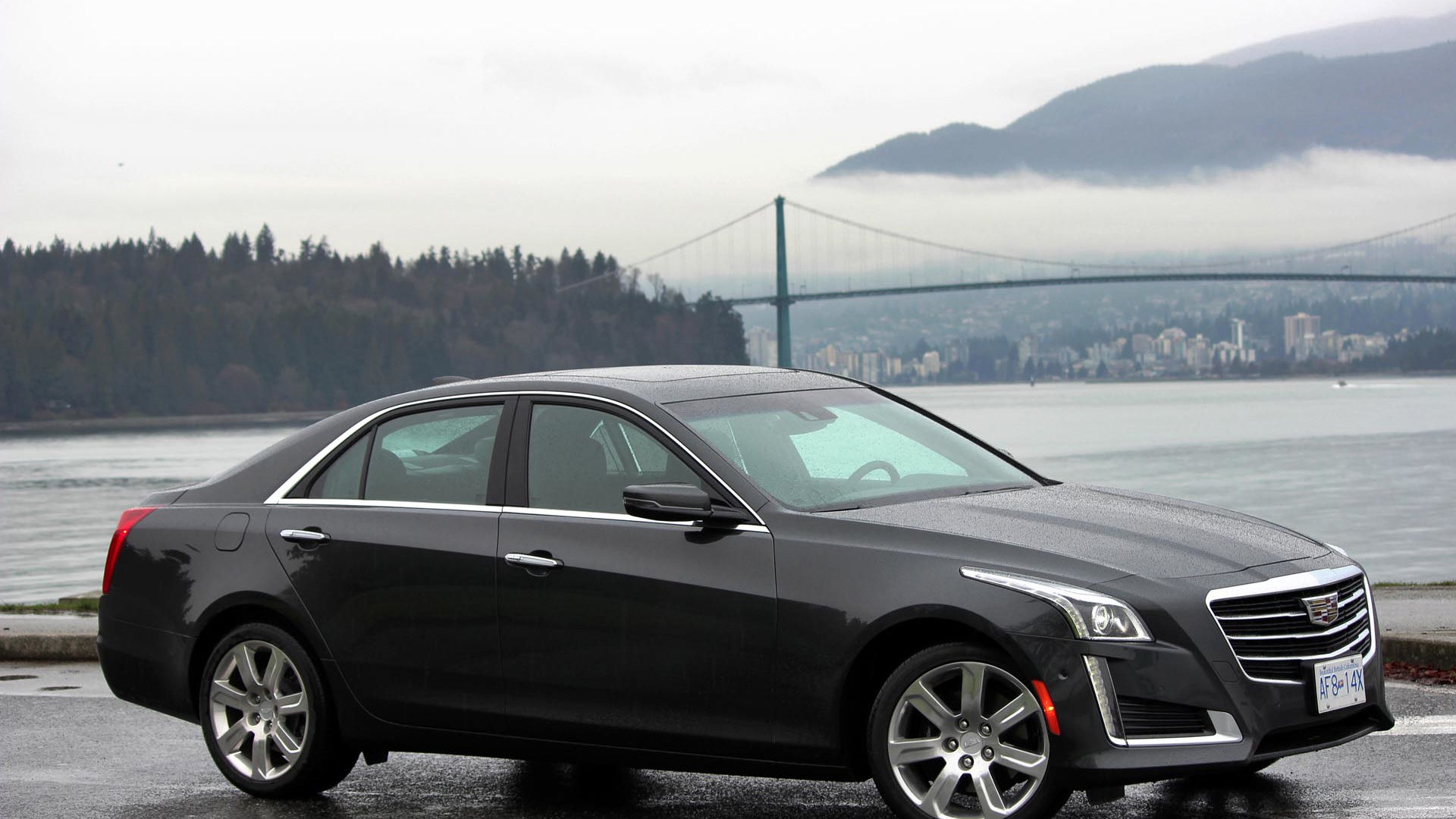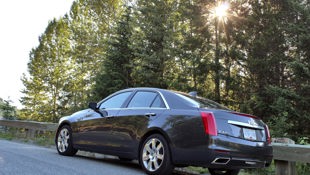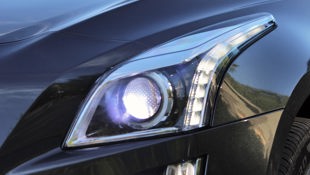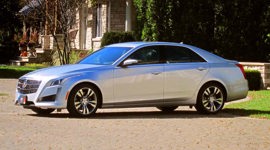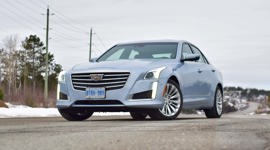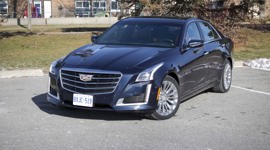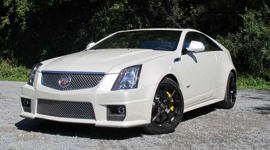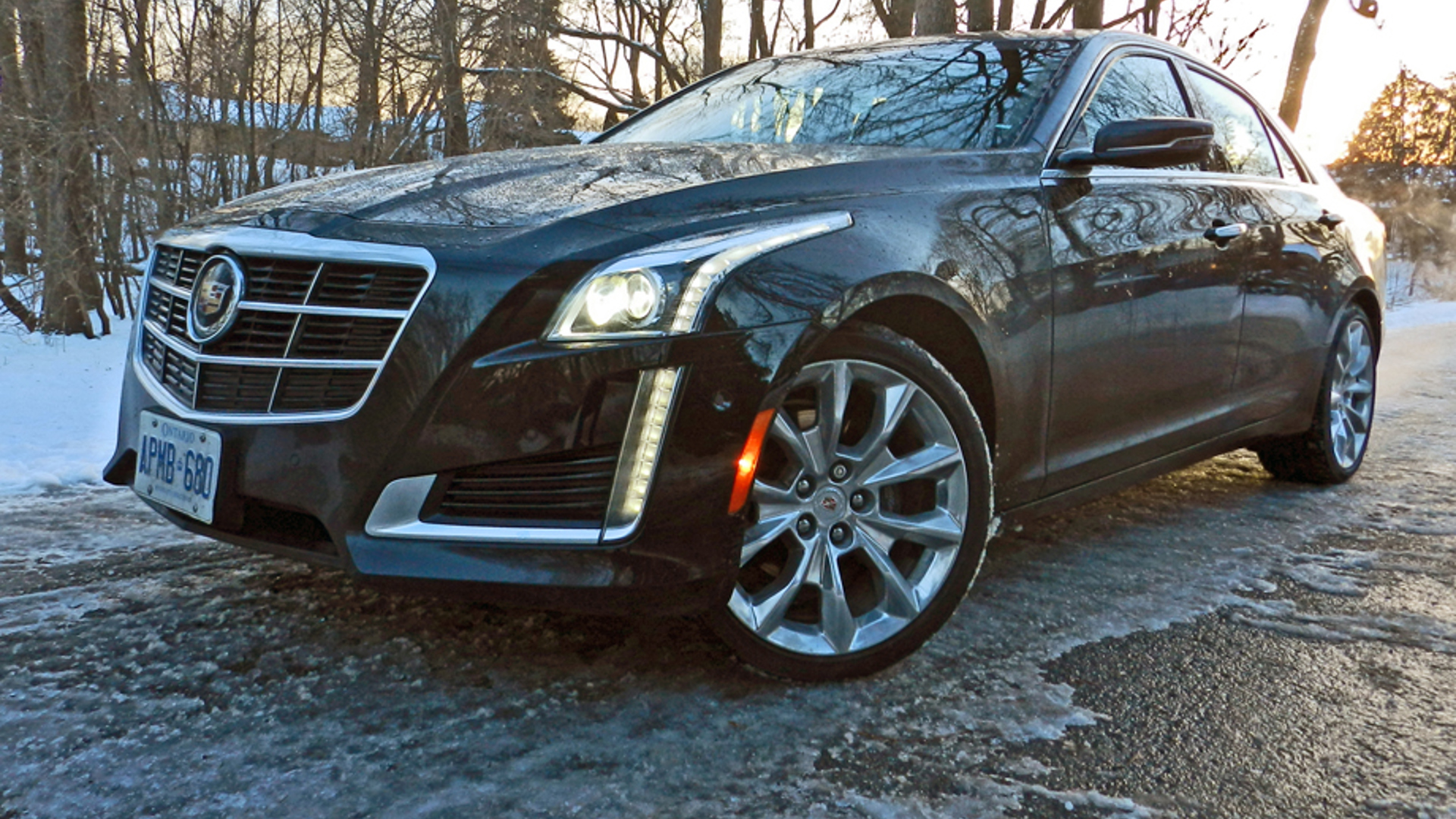 AutoTrader SCORE
AutoTrader SCORE
-
COMFORT7/10
-
PERFORMANCE7/10
-
FUEL ECONOMY5/10
-
INTERIOR8/10
-
EXTERIOR STYLING8/10
When I first sat in my 2015 Cadillac CTS tester, SiriusXM radio station Backspin – home to classic hip-hop and rap – was playing a song called “My Hooptie” by Sir-Mix-A-Lot. He raps about a car with its “tailpipe draggin’” and with wheels that are “Vogues on the left, Uniroyals on the right”. It was oh-so-pertinent, because I had just finished watching the original, 1974 version of Gone in 60 Seconds, and there’s a car in that movie that perfectly embodies Sir Mix’s description, and it just so happens that it’s a Cadillac; a ’65 Coupe De Ville, to be precise.
The CTS is built to take on the likes of the Audi A6, Lexus GS and BMW 5 Series.
What you see here, however, is no dumpy, saggy Caddy. For starters, just look at it: the big grille, jeweled, vertical foglights (which flow into the LED DRLs above) and chiseled, Cadillac Arts & Science body panels; this is a tautly styled car. There are a few issues, of course; the wheels are a little small (they’re 18s, but can be upgraded to 19s for $1,095) and the proud Caddy coat of arms on the front grille is finished in… plastic?
Well, yes, but there’s a good reason for that. You see, this CTS includes adaptive cruise control, and they had to find a place to install the receiver. Now, on most cars with this feature, it mars the look of the front fascia. So, what Cadillac’s done, is hidden it in the emblem. When you look at it that way, it doesn’t seem so bad.
The CTS is built to take on the likes of the Audi A6, Lexus GS and BMW 5 Series. This is not just any CTS, either; of the seven available AWD trims, this is the whole hog, 3.6L V6 (a 2.0L four-cylinder turbo is also available) Premium Collection version. In RWD form, you also get the Vsport choice, but that’s not the case here.
It’s not the case because while the RWD Vsport can be seen as a bit of a hot-rod version (well, hot-rod light once the CTS-V arrives later this year, the AWD car is more of an everyday sled, with a sporting bent when you need it. Having said that, for a savings of just over $5,000, you can select the Performance Collection model, which gets you 19-inch wheels as standard. You lose stuff like the Premium Collection’s standard adaptive cruise control and 12.3-inch digital gauge cluster, however.
For the everyday, a host of electronic doo-dads make life easier and more comfortable, for the most part. It starts with heated and ventilated (to three levels) seats, which Cadillac says can be adjusted 20 ways up front. That’s true, if you include the headrest adjustment and the bottom seat-cushion adjustment, which are both of the manual variety. The 14-way power adjustments includes the seatback, lumbar, and seat height.
Taller drivers shouldn’t have a problem thanks to an impressive 1,081 mm of front leg room (more than a 5 Series), and 1,026 mm of headroom (more than a Lexus GS 350). That’s even with the power sunroof, which comes as standard at this level. Indeed, I remember thinking on numerous occasions just how perfect the seating position was; just a little reclined, but not so much that you can’t see adequately or reach the power-adjustable steering wheel (which automatically telescopes back when you park, making it easier to get out). Back seat passengers get 899 mm and 952 mm, respectively, which is right on par with the competition.
They also get heated seats and the seat can either split fold, or if you want to fit a longer item without costing yourself too much space on the back row, there’s a lockable pass-through door. Not that you’ll be needing all that much; at 388L, there’s enough trunk space to fit a couple of suitcases for a weekend getaway. It’s a shame that the floor’s not flat, though, and when fully collapsed, the rear seats reveal a trunk passage that looks a little smaller than it could be, and seems unfinished as a result.
I also wish that you were allowed to mix n’ match more when it comes to your interior style; there are only four pre-determined combinations of colours and materials used to choose from, and they can’t be modified. So, if you want Jet Black leather seat surfaces, you have to have carbon trim. If you want Kona Brown, walnut trim is your only choice. Sure, it simplifies the buying process, but I’d still like more options.
That’s the main problem with the interior’s fit and finish; the rest is just a nice mixture of fine leather, real carbon or wood trim materials, topped off with a piano black centre stack.
Oh, that centre stack.
When the car’s off, it doesn’t look like much; that’s because the Cadillac User Experience (CUE) infotainment is housed there, and it’s a full-touch interface and unless the ignition is in accessory mode or better, nothing is displayed.
How much you like CUE depends on how comfortable you are with a touch interface. There is some haptic feedback when an input is registered, but it’s oh-so-subtle and takes undue concentration to feel. Next thing you know, you’re ears are ringing because you’ve turned the volume up to the proverbial “11”. Best you use the buttons mounted on the steering wheel spokes for this.
The touchpad flips up to reveal a storage bin, perfectly sized for wallets and cell phones. It’s a neat trick, if only it wasn’t such an exercise in trial and error to flip down once you’ve deployed it. You kind of have to swipe and push down on the bottom edge at the same time; I often felt like I was about to break it off. Which, thanks to the frustration it caused, I often felt like doing. Just another example why touch surfaces just aren’t the be all, end all.
In addition to the CUE screen is a modifiable digital gauge cluster, which lets you choose from three settings: Simple, Balanced, Enhanced and Performance. What’s displayed en majeur changes depending on which mode you select; Simple, for example, puts your speed right there the middle of the cluster, in big block numbers. Performance, meanwhile, provides digitized tach and speedometer dials. It’s slick-looking, even upstaging the likes of the Jaguar XJ, which was one of the pioneers of this type of tech. Perhaps most importantly, instead of seeming like tech for the sake of tech – as CUE can, it’s genuinely useful.
The only button on the dash is the engine start/stop button, and a prod of it brings to life an award-winning V6 that actually sounds just this side of ornery, the quality of which, of course, depends on what you’re looking for.
Power is rated at 321 hp and 275 lb-ft. of torque, the former figure up 19, the latter down 25 on the BMW 535i xDrive. However, thanks to the CTS’s naturally-aspirated powerplant, power delivery is nice and linear without the peaks and valleys associated with turbo lag and boost.
At the outset of acceleration, the CTS pulls nice and strong, but as you do get up to highway speeds, acceleration does taper off a little more than I’d like when in the calmest of the three driving modes (Touring, Sport and Snow/Ice). Switching to manual transmission and using the paddle shifters helps, but I found myself reverting to Sport mode more than I would have imagined. It’s no big deal, but I do take issue with having to select a different mode during normal driving on the highway.
Having said that, the six-speed automatic transmission is in keeping with the smoothness of the engine (Vsport models come with an eight-speed auto shared with the Corvette). Shifts are quick and smooth, making the use of the paddle shifters that much more enticing.
Cadillac’s Magnetic Ride Control dampers come as standard on the Premium. They adjust on-the-fly – 1,000 times a second – to respond to the conditions of the road below. They’re also modified when selecting the different drive modes. The result – in partnership with the CTS’s segment-leading 1,763 kilo curb weight – is a surprisingly agile car on one hand, and a smoother-riding car on the other, should you set the dampers and drive mode that way. It’s fantastic, and if the engine just had a little more oomph – which it does, in Vsport form – the CTS would be pretty darn close to the complete package in terms of driving dynamics and ride quality.
So the driving dynamics are there, but what about the other side of the CTS experience? This is a luxury mid-size sedan, so it’s gotta be able to cruise comfortably and without incident.
A host of electronic driver aids also come as standard, including adaptive cruise control, active lane keep assist, blind sport warning system, collision warning system, and rear cross-traffic alert which is complimented by automatic braking. On top of all that and in addition to your digital gauge cluster, there’s also a configurable head-up display reflected off the windshield, whose height can be easily adjusted by flipping a toggle switch mounted (a little too low, I must say) to the left of the steering wheel. Unlike BMW’s HUD, you can clearly see Cadillac’s take on the tech with polarized sunglasses on.
That blind-spot system is an important one, because the wing mirrors on the CTS are just too small. Not only are they small, but their shape is in keeping with the rest of the car’s edgy design, and they’re not especially practical. No amount of adjustment left me feeling comfortable with my field of view.
So, while the blind-spot system and most of the other aids are handy and well-implemented, I did find the active lane-keep assist – whereby the car will steer itself back on line – to be a little overly aggressive. It’s the opposite of CUE’s haptic feedback stuff in that you can really feel it, as opposed to it making itself subtly present and reverting back into the shadows. You can turn the system off with the touch of a button (that’s “touch” of a button; not “press” of a button) mounted just left of the CUE display.
Once you get over all that, though, the CTS is a fine performer that provides a suitably luxurious drive, befitting of the classic greatness associated with the Cadillac brand. It’s comfortable, it looks handsome (except for the wheel thing), the 3.6L V6 is a good powerplant and the available tech should satisfy your mid-level luxury needs.
It ain’t no hooptie, that’s for sure.
NRCan Fuel Consumption: 12.8/8.9 City/Highway
Observed Fuel Consumption: 12.1 L/100 km
| Warranty: 4 years/80,000 km; 6 years/110,000 km powertrain; 6 years/unlimited distance corrosion perforation; 6 years/110,000 km roadside assistance Competitors: |
| Model Tested | 2015 Cadillac CTS 3.6L AWD Premium |
|---|---|
| Base Price | $71,905 |
| A/C Tax | $100 |
| Destination Fee | $1,800 |
| Price as Tested | $73,805 |
|
Optional Equipment
None
|
|
